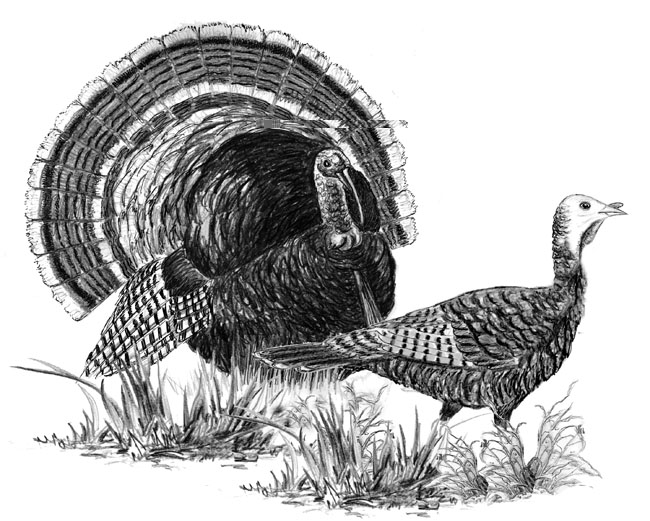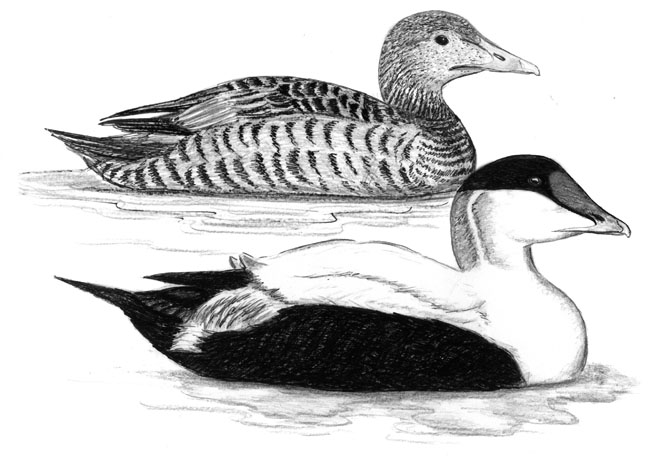
Dear Bird Folks,
Now that the mating season is here I am noticing, not for the first time, that human males are drab and the females are gorgeous. However, among birds, it’s the other way around. Why is that?
– Ranganath, Belmont, MA
Not another Ranganath,
A few years ago I wrote a column in response to a question from someone named “Ranganath,” who, coincidently, was also from Belmont, MA. Maybe you know him or does everyone in Belmont have that name? Anyhow, I’m glad you wrote because the question from that other Ranganath was kind of lame. Your question is much better, except for the part about human males being “drab.” Maybe the males in Belmont are drab, but here on Cape Cod the men look like Greek gods…old, retired Greek gods.
Believe it or not, you aren’t the first person to wonder why male birds typically look flashier than their mates. Charles Darwin himself spent a lot of time on this subject. You remember Darwin, don’t you? He’s the guy whose ideas have caused so much trouble in public schools, especially in parts of the country where evolution seems to have slowed down.
When it comes to attracting a mate, mammals and birds have different approaches. Mammals tend to be all about brute force. The strongest lion, the walrus with the longest tusks or the elk with the biggest rack tends to get the most females. (Oddly, with humans it’s the males who are attracted to the biggest racks.) Stronger mammals are able to muscle their way past the competition. Male birds, on the other hand, are inclined to be more passive-aggressive. Instead of physically confronting his rivals, a male will strut his stuff and try to outshine the others. A perfect example of this is going on right now. Just drive down any back road and you are likely to see tom turkeys that are so puffed up they look like they are about to explode.
Many people look at these showboating birds and think, “stupid males,” but Darwin blames the females. After all, it is the females that choose to mate with these pretty boys. The females could have just as easily selected the duller males, which actually might make more sense. I mean, who needs a fancy mate that might attract predators? Besides, living with a hot piece of eye candy isn’t as perfect as it sounds (just ask my wife). But the female birds have a different way of looking at it. They figure the males with the finest looking feathers and the brightest colors are likely to be the fittest birds and thus will be the best providers. A male that looks worn out and ratty obviously doesn’t have the skills needed to find enough food for himself, let alone food for a new family. Thus, the birds that look the best are the ones that most easily find mates, while the duller birds end up working for IBM.
In addition to being helpful in attracting the ladies, bright colors help the males announce their territories. A showy male makes it obvious to all comers that his territory is occupied and any would-be usurpers had better look elsewhere. Of course, bright colors come with a price. Potential predators can also see these dazzling dudes, which puts them at greater risk. Instead of attracting a female, a showy male could end up catching the attention of a passing hawk. Our friend, the Red-winged Blackbird, has worked out a way to have the best of both worlds. His colors can be seen and not seen, depending upon the situation. When a male redwing is on his territory, he flashes his bright red wing-patch and makes sure that all the other males see it. But if there is any sign of danger, he can quickly cover up his wing-patch and have almost no color showing. Unfortunately, some birds, like Mr. Cardinal, for example, can’t put their colors away. They are bright red 24/7, which could be part of the reason why there are a lot more redwings than cardinals.
As with most things in nature, there are always exceptions to the rule. The exceptions in this case are birds called “Phalaropes.” Phalaropes, which are shorebirds, have their sex roles reversed. It’s the males that do the incubating and chick rearing, while the females are larger and more colorful. The females also defend a territory and aggressively court the males. In fact, I think Sadie Hawkins was phalarope, but I’ll have to check that.
Let’s not forget about the birds where both sexes are identical. Catbirds, chickadees and Canada Geese, for example, all look the same. They don’t have any obvious differences in their plumages, right? Well, scientists are beginning to realize that birds can see colors that we can’t, including ultraviolet. Just because two birds look the same to us, doesn’t mean they look the same to each other. There could be more to a bird’s plumage than meets the eye. Pretty deep, eh?
There are nearly 10,000 different species of birds on the earth, Ranganath, and each one has its own mate selection process. With some species the males’ plumage is a major factor, but others attract a mate with their singing ability, their courting skills or a combination of all of the above. When it comes to choosing a mate the bird world has a great deal of diversity. The town of Belmont, on the other hand, isn’t quite as diverse, since everyone is apparently named Ranganath. Man, that must be confusing.
